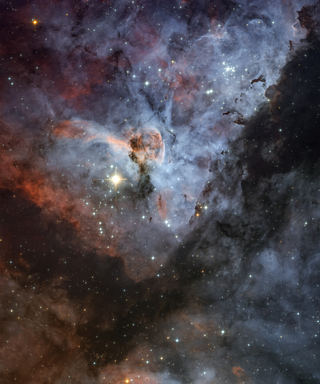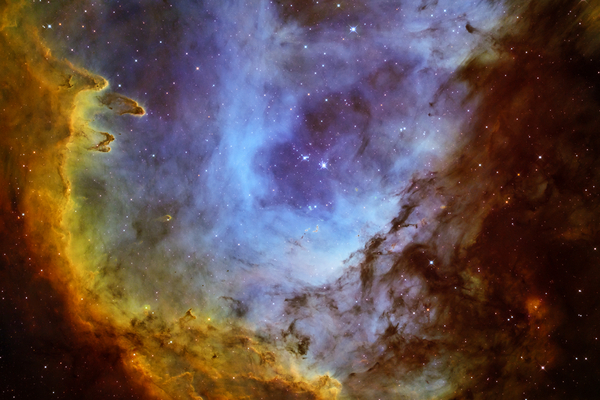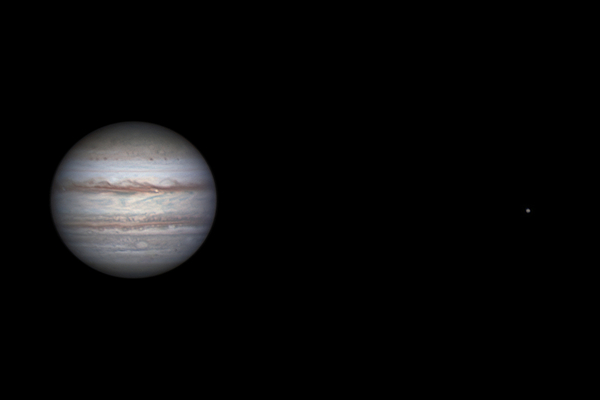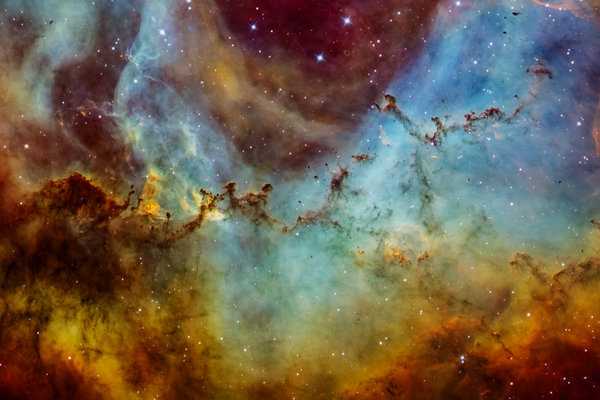Picture of the Month - February 2021 - Eta Carinae
One of the most interesting stars in the sky and the nebulae surrounding it on a high-resolution image by Lionel Majzik
A wonderful and special astrophotography image each month by Hungarian astrophotographers.
A special star
The star Eta Carinae is a very bright hypergiant with a mass of between 100 and 150 solar masses. It is 4 million times brighter than the Sun, and is 7,500 light-years away from Earth. The giant star’s aggressive ultraviolet radiation illuminates the brightest parts of the nebula named after it. Its strong stellar wind that blows the amount of material equal to Jupiter from the surface of the star each year, shapes the central part of the nebula in its own image. Thus it creates interesting interstellar gas and dust structures rich in shapes and colors, which can be observed from the southern hemisphere in the Carina constellation.
The supernova imposter
The Eta Carinae hypergiant is not only bright, but sometimes it fakes its own death by erupting or better to say, almost exploding. The history of science has recorded two such occasions, one between 1887-96 and one somewhat earlier, between 1838 and 1858. The last one is called GE (Great Eruption). At its brightest it reached a magnitude of -0.7, becoming the brightest star in the Milky Way and the second brightest star seen from Earth. During this period the restless star radiated 10 percent of the energy of a supernova explosion, and ejected an amount of material equal to 10-12 Suns.
Photographing from the southern hemisphere
Objects in the southern hemisphere can be photographed in two ways. The most obvious way is to travel there, however the transport of the equipment and the trip itself is not easy, especially in the current pandemic situation. However there is another solution, the remote robotic telescope astrophotography, which the author himself tells us about.
The telescope
Due to the extremely unfavorable weather in Hungary, I decided to make an “online tour” to Chile, and turn one of the best optics of the Telescope Live robotic telescope network, the 61-cm PlaneWave CDK24 towards this spectacular southern celestial object. It is worth noting that these telescopes can be pre-programmed via an online interface, and they capture the requested raw material for us in the reserved time. It is recommended to be aware of all the parameters of the latter in order to get a good result.
The photographing
From January the 14th to February 1st I collected nearly 2.5 hours of RGB and narrowband material on five nights from the surroundings of the star Eta Carinae. I have already taken a similar remote-controlled picture of this area before, but with a much wider field of view. I got to know the wonderful details of the inner areas of the nebula in more detail during my image processing a few years ago, and I decided to capture them in detail later.
In the last months I experimented a lot with the combination of traditional RGB and narrowband (Ha, SII, OIII) images, so there was no question that I was going to try to capture the surroundings of the Eta Carinae in this way as well. For the aesthetic image processing I used almost the same exposure times per filter, and for setting the colors I mixed the RGB and the narrowband material with the ratio of 50-50%. As a result it is not surprising that I got different colors than usual, which I tried to present in a natural and restrained way.
Lionel Majzik





